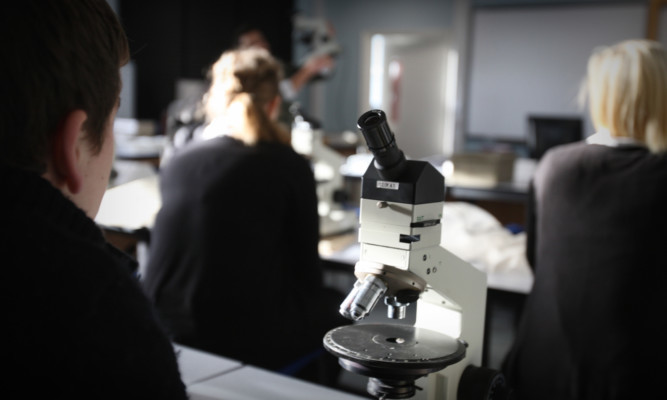A lack of support for Perthshire teachers has been blamed for a dramatic rise in classroom violence.
Leading teaching union the NASUWT claims the rate of assaults on staff in schools across Perth and Kinross has soared in recent years, as trained support workers are “very subtly and surreptitiously” removed from classrooms.
Figures obtained by The Courier show the number of incidents involving assaults by pupils on primary school teachers rose from 80 five years ago to 129 in 2013-14.
In some incidents, pupils used school equipment as weapons, including stationery, crockery and cutlery.
However, Perth and Kinross Council has denied any recent reduction in support staff levels. It pointed out that the incidents represent less than 1% of the area’s pupil population.
The issue was highlighted at the NASUWT’s annual conference in Cardiff.
Shaun Cooper, a teacher representing the union’s Perth and Kinross association, said: “Within our local authority, incidents of violent aggression have doubled in the past three to four years.
“It’s strange that in the past three to four years, resources, support staff and specially trained staff have been very subtly and surreptitiously removed so class teachers are having to integrate and include children who should be getting additional support but they’re not.”
The claims follow figures released by unions which showed teachers across the UK had received more than £27 million in compensation payments after being physically or psychologically harmed or discriminated against at work.
Figures released by the local authority show very few teachers were treated in hospital following the assaults and there was only a handful of occasions when police had to be called to the school.
Between 2013 and 2014, 22 students were suspended or excluded in Perth and Kinross for physically attacking a teacher, compared to 14 five years earlier.
The most recent figures for 2015 were not available.
A council spokeswoman said: “Almost all of our pupils are well behaved.
“Perth and Kinross Council does not tolerate bad behaviour in our schools. The care and welfare of both our pupils and our staff are a priority.
“Any incident reported is investigated and appropriate action taken.”
She added: “The claim that staffing resource in Perth and Kinross schools has been reduced in recent years is incorrect.
“There has been no cut to the budgets, nor a reduction of hours allocated to staff whose role it is to support pupils with identified needs over the last four years.”
The NASUWT conference heard that teachers were afraid to ask for support to deal with badly behaved pupils because they fear they may be personally blamed for the students’ misbehaviour.
Science teacher Jane Setchfield, a member of the union’s national executive committee, said some UK schools had an “endemic” culture that “seeks to cast blame on the teacher when a problem occurs”.
Shadow minister for young people Liz Smith MSP said: “Poor pupil behaviour in some schools remains a big challenge.
“There is no one way of tackling the issue and I don’t think it is particularly helpful to blame teachers all the time.
“However, if a particular teacher has a problem then it is up to the headteacher and if necessary the General Teaching Council for Scotland to deal with that particular concern.
“But on a general basis, good discipline is fostered when there is strong leadership throughout the profession, when there is good parental support for the school’s policies and when the pupils themselves feel wholly engaged with the school, its learning and its extra-curricular activities.”
